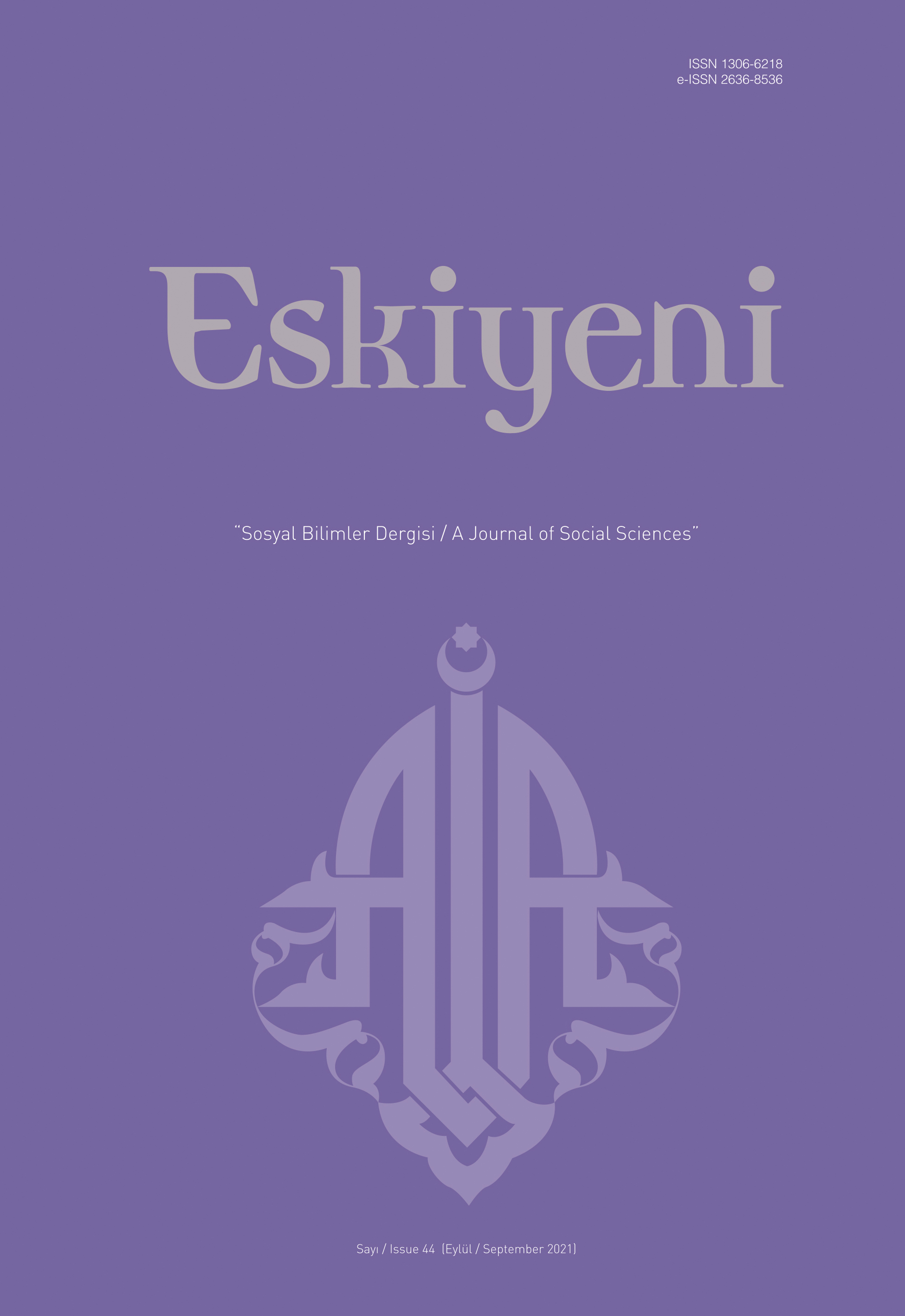Lâmiyyetü’l-ʿAcem Şerh-Hâşiye Geleneğinde Kurucu Bir Eser: Safedî’nin Ġays̱ü’l-Edeb’i
A Constitutive Text in the Commentary (Sharh) and Annotations (Has-hiyah) Tradition of Lāmiyat Al-‘Ajam: Al-Safadī’s Commentary Ghayth al-Adab
Author(s): Mehdi CengizSubject(s): Language and Literature Studies, Studies of Literature, Rhetoric
Published by: Anadolu İlahiyat Akademisi
Keywords: Arabic Language and Rhetoric; Poem; Qaṣeeda; Constitutive Text; al-Ṣafadī;
Summary/Abstract: Al-Tughrāī’s (d. 515/1121) ode (qaṣeeda) titled Lāmiyyat al-ʿAjam has an important place in Arabic literature with its rhetoric arts, concise style and wise words it contains. Therefore, dozens of commentaries (sharh), annotations (khashiyah), takhmīs (embarkation) and taşṭīr written on the ode. During the Mamluks period, al-Ṣafadī (d. 764/1363), who held important positions such as clerk and bayt al-māl deputy, was one of the writers who commented on al-Tughrāī’s ode. al-Ṣafadī, who commentes the ode in terms of language and balāgha such as ishtiqāq, grammar (naḥw), bayān, morphology (ṣarf) and badī‘ gives detailed information about many disciplines from chemistry to biology, history to philosophy in this work. al-Ṣafadi’s commentary, which mentions his own poems from time to time, is also a poetry anthology. In this study, information about the content and method of commentary of as-Ṣafadi’s work titled Ghayth al-adab alladhī insajama bi sharḥ Lāmīyat al-ʻAjam and its constitutive role in the commentary and annotations of Lāmiyyat al-ʿAjam tradition will be shown. In this context, it is noteworthy that al-Ṣafadī’s commentary was separated from other Lāmiyyat al-ʿAjam commentaries with studies such as annotation and abridgement (ikhtisār). As a matter of fact, dozens of commentary and khashiyah studies show that al-Ṣafadī’s work is a constitutive text in the Lāmiyyat al-ʿAjam literature. The abridgement studies on the work are not related to the fact that al-Ṣafadī's style is ambiguous and needs explanation, but that it includes information that is not directly related to Al-Tughrāī’s ode. For example, al-Ṣafadī mentions many topics unrelated to Lāmiyyat al-ʿAjam, such as chess, various fable examples, the definition of the sun, how the moon receives its light from the sun, and solar and lunar eclipses. al-Ṣafadi did not unconsciously use this type of writing, on the contrary, he said in the introduction of his work that he adopted this method that Jāhiz (d. 255/869) followed in his Kitāb al-Ḥayavān.In addition, some of the stories mentioned by al-Ṣafadī were considered obscene by subsequent scholars, so it was preferable to abridge the work. In this context, Muḥammad al-Damīrī’s (d. 808/1405) al-Maqṣad al-atamm sharḥ Lāmiyyat al-ʻAjam (Mukhtaṣar sharḥ Lāmiyyat al-ʻAjam) was prominent among other specialists in his work. In addition, Ibn al-Damāmīnī's (d. 827/1424) critique of Nuzul al-Gayth alladhī insajama ʿalâ sharḥ Lāmīyat al-ʻAjam is also noteworthy. Ibn al-Damāmīnī, preferred to criticize Safadi’s work instead of condensing it and from time to time he accused as-Ṣafadi of larceny. Ibn Akhbars, who stated that there were unfair criticisms of Ibn al-Damāmīnī, prepared a study called Taḥkīm al-ʻuqūl bi-ufūl al-Badr fī an-Nuzūl, and compared the views of the two authors. In the introduction of the study, what is meant by the constitutive text will be explained and as-Ṣafadi’s commentary will be examined in terms of content in the first part of the article. In the second part, it will be shown that the work is a constitutive text within the framework of annotations and abridgments on Ghayth al-adab.
Journal: Eskiyeni
- Issue Year: 2021
- Issue No: 44
- Page Range: 629-643
- Page Count: 15
- Language: Turkish

